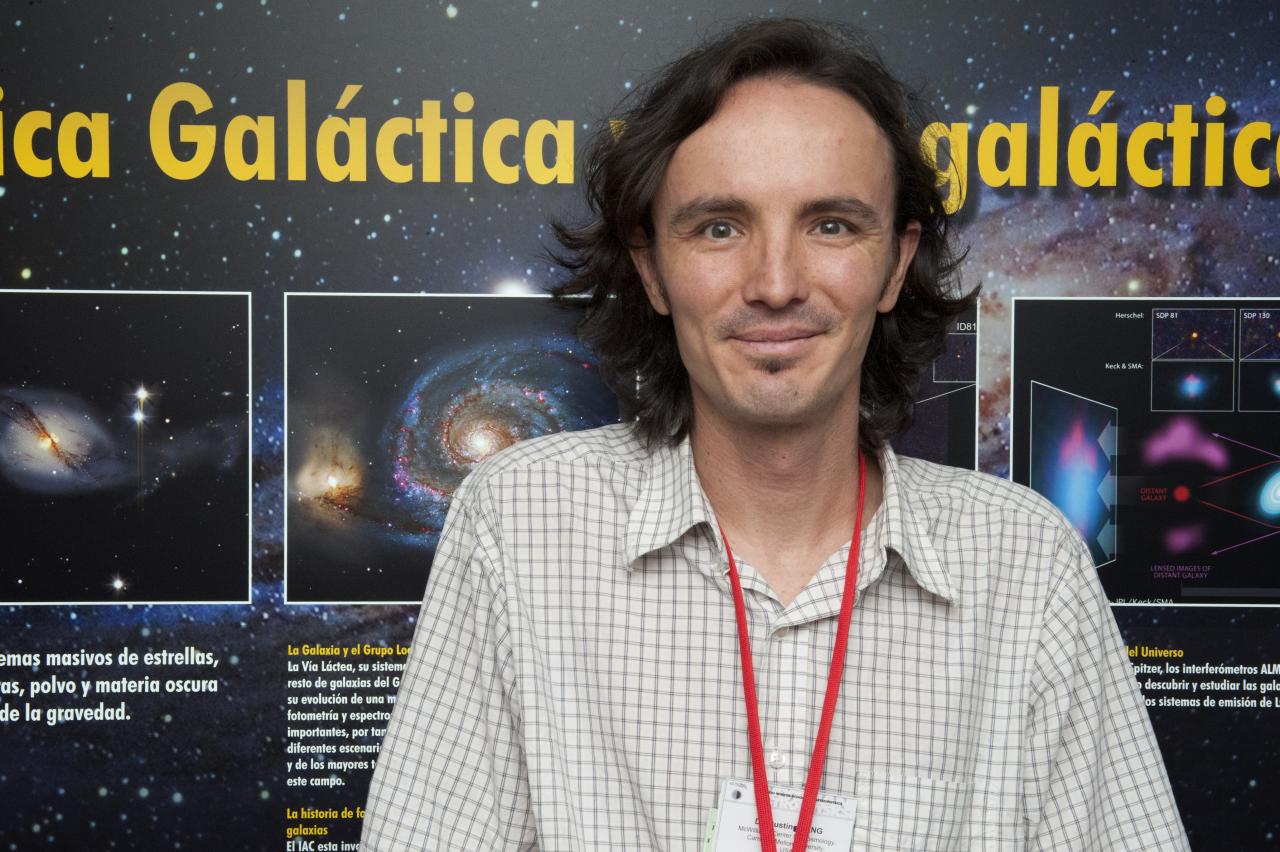By MIGUEL LÓPEZ RUBIO
“First we analyze the normal phenomena and then we try to find the unusual. And that is where we need statistics, of course”
“I support the idea that astronomical data should be public”
“The big question is why is the universe accelerating?”
Dustin Lang says that his field of research is a cross between computational science and astronomy. If he had to use a single word to summarize his work it would be “images”, in the plural. From them he tries to extract all the information he can. “The objective is to make the best use of the data to answer questions and to find out which new questions need to be asked”. Lang is the MacWilliams Postdoctoral Fellow at the McWilliams Center for Cosmology at Carnegie-Mellon University, in Pittsburg Pennsylvania (USA) and one of the lecturers at the Winter School of the Astrophysics Institute of the Canaries (IAC) about Bayesian methods.
Question: Working with images of the universe sounds really evocative..
Answer: Yes, but in those beautiful images we don´t study the big bright good-looking objects which we see directly. On the contrary we look at the small fine details such as the mess round the edges.
Q: And from the mess you can pull out useful data?
A: We write computer programs to do that. An example, we look for a star or perhaps a galaxy in those small bright peaks in the image. To do this we need to measure the brightness, and colour plays key role. We are all used to seeing images in colour, but in astrophysics we use filters of different colours –blue, red, green. We compare the images, obtain measurements, and draw our conclusions. From the brightness or the size you can tell how far away the object is in space, but even then there is still more to know: “What type of star is it, what is its mass, what phase is it in?” The filters help us. In my case I use the image to produce a list of objects, with which my colleagues do amazing things.
Q: You have analyzed simultaneously large quantities of data from the Wide Field Explorer Survey (WISE) and the Sloan Digital Sky Survey (SDSS). That means a lot of data; how do you handle it all?
A: Basically we work in two ways: to find what is common and then try to find strange phenomena. And then we apply the statistics, of course. We do this first conventionally, for example by finding what types of stars predominate in a given region, or how many they are. Basically this is not different from the common statistical questions, such as how many people live in the countryside or in a city. Then we look for the unusual. Sometimes it is hard to decide whether an object is really unusual, or whether it appears unusual because you didn´t measure the normal things correctly.
Q: In this process do you take part in the development of projects which provide public databases?
A: Yes. I am a strong supporter of making astronomical data publicly available, it´s great.
Q: One of the fields in which you have worked is also one of the big questions in astrophysics: dark energy.
A: That´s right. The big question: why the universe is accelerating. In astronomy when we don´t understand something we tend to use the adjective dark. In this case we are dealing with something we can´t detect directly, but we believe it must be there because something has to be accelerating the expansion of the universe. I think maybe we could call it “transparent energy”.
Q: Maybe a more concrete datum is the size of the universe, a subject in which you are also working…
A: To do this, one method is to observe the universe back in time, analyzing the spaces between the clusters of galaxies. This is a bit like using a rule whose size is constantly changing.
Organizing Committee: Andrés Asensio Ramos, Íñigo Arregui, Antonio Aparicio y Rafael Rebolo.
Secretary: Lourdes González.
Contacts: Andrés Asensio Ramos (IAC): aasensio [at] iac.es (aasensio[at]iac[dot]es) y 922605238 Íñigo Arregui (IAC): iarregui [at] iac.es (iarregui[at]iac[dot]es) y 922605465
Press: Carmen del Puerto: prensa [at] iac.es (prensa[at]iac[dot]es) y 922605208
Previous press release: http://www.iac.es/divulgacion.php?op1=16&id=897
Programme of the Winter School: http://www.iac.es/winterschool/2014/pages/about-the-school/timetable.php
Further information: http://www.iac.es/winterschool/2014/
